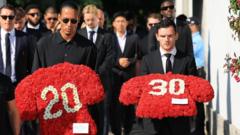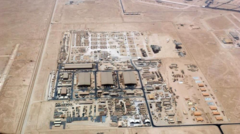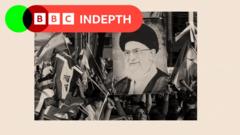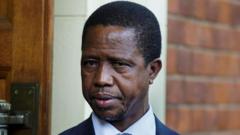Pope Francis’ funeral was marked by an impressive congregation of leaders and everyday citizens, reflecting on his legacy of inclusivity within the Catholic Church. Dignitaries engaged in underlying geopolitical discussions during a time of conflict, while the ceremony itself symbolized a shift toward simplicity reflective of Francis’ own teachings.
Tributes Pour In as Pope Francis' Funeral Draws Global Mourners

Tributes Pour In as Pope Francis' Funeral Draws Global Mourners
Mourners unite in Vatican City as world leaders, dignitaries, and religious figures pay their final respects to Pope Francis during his simplistically profound funeral service.
The aftermath of Pope Francis' passing on April 26, 2025, saw a significant gathering of thousands in St. Peter’s Square for a heartfelt farewell. Known as the first Jesuit and first Latin American pope, Francis inspired numerous reformations within the Roman Catholic Church, focusing on inclusivity and reducing ecclesiastical grandeur.
On Saturday, mourners observed a solemn Mass officiated in an open-air setting, combining traditional ornate Catholic rites with elements of simplicity that Francis advocated throughout his tenure. Attendees included a blend of royalty, heads of state, and numerous everyday citizens, reflecting the pope’s special affinity for the marginalized. In stark contrast to earlier burial ceremonies, which were marked by elaborate displays, Francis had chosen a simplified funeral format as a nod to his vision of a humble church aligned with the people.
The ceremony also unfolded against the backdrop of ongoing international tensions, as notable political discussions occurred discreetly among dignitaries. Notably, U.S. President Donald Trump and Ukrainian President Volodymyr Zelensky met during the service, showcasing the intertwining of spirituality and diplomatic discourse on such a significant occasion.
During the funeral Mass, Francis' body lay in a plain wooden coffin, emphasizing his will for a modest farewell without excessive decorum. The selected readings for the ceremony echoed his enduring commitment to reaching a diverse global audience and underscored themes of forgiveness and transformative faith.
Musical elements, predominantly Gregorian chants as per traditional papal funerals, resonated throughout the service, reinforcing the sense of historic continuity in the face of an evolving church. Although the physical burial site will differ from that of his predecessors—Francis chose interment at the Santa Maria Maggiore basilica—his legacy will live on as a testament to the compassion he exemplified during his 12-year papacy.
In conclusion, Pope Francis' funeral not only commemorated a significant religious leader but also highlighted a pivotal moment of connection during challenging geopolitical climates. As the Church stands at a crossroads, the selection of Francis’ successor will undoubtedly shape the future trajectory of the Catholic community worldwide.
On Saturday, mourners observed a solemn Mass officiated in an open-air setting, combining traditional ornate Catholic rites with elements of simplicity that Francis advocated throughout his tenure. Attendees included a blend of royalty, heads of state, and numerous everyday citizens, reflecting the pope’s special affinity for the marginalized. In stark contrast to earlier burial ceremonies, which were marked by elaborate displays, Francis had chosen a simplified funeral format as a nod to his vision of a humble church aligned with the people.
The ceremony also unfolded against the backdrop of ongoing international tensions, as notable political discussions occurred discreetly among dignitaries. Notably, U.S. President Donald Trump and Ukrainian President Volodymyr Zelensky met during the service, showcasing the intertwining of spirituality and diplomatic discourse on such a significant occasion.
During the funeral Mass, Francis' body lay in a plain wooden coffin, emphasizing his will for a modest farewell without excessive decorum. The selected readings for the ceremony echoed his enduring commitment to reaching a diverse global audience and underscored themes of forgiveness and transformative faith.
Musical elements, predominantly Gregorian chants as per traditional papal funerals, resonated throughout the service, reinforcing the sense of historic continuity in the face of an evolving church. Although the physical burial site will differ from that of his predecessors—Francis chose interment at the Santa Maria Maggiore basilica—his legacy will live on as a testament to the compassion he exemplified during his 12-year papacy.
In conclusion, Pope Francis' funeral not only commemorated a significant religious leader but also highlighted a pivotal moment of connection during challenging geopolitical climates. As the Church stands at a crossroads, the selection of Francis’ successor will undoubtedly shape the future trajectory of the Catholic community worldwide.























